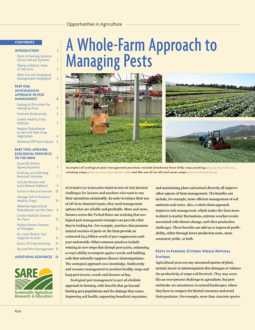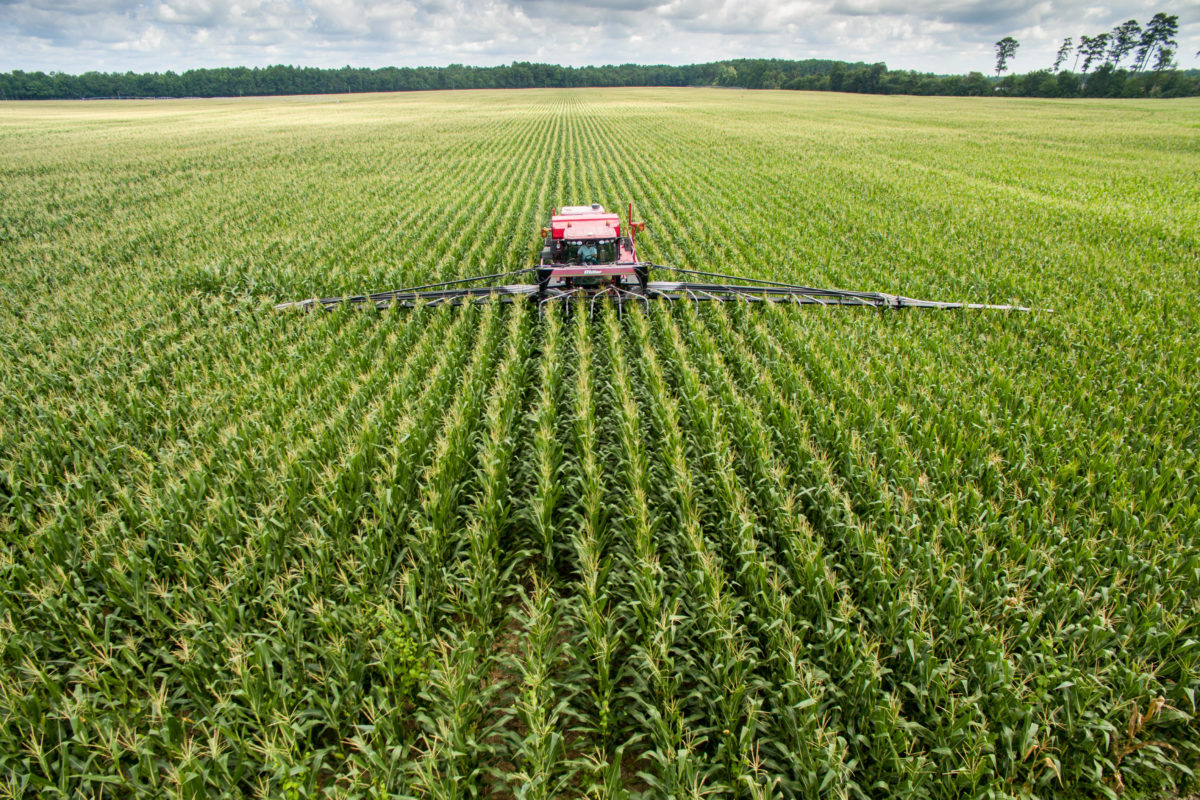
Starting in the 1950s, most growers began to rely on agrochemical-based strategies to manage pests. Low-cost pesticides were seen as convenient “silver bullet” solutions, but that view is changing. Repeated use of pesticides has brought about resistance in many pest species. In addition, broad-spectrum insecticides not only kill crop pests but also important non-target predators and pollinators. These disruptions lead to pests resurging and returning to crops faster and in greater numbers, but with fewer predators and parasitoids to control them. In time, the repeated use of pesticides can create conditions where pests thrive, resulting in growers who feel compelled to lean more heavily on the same agrichemical controls that caused the problem; this situation has been named the “pesticide treadmill.”
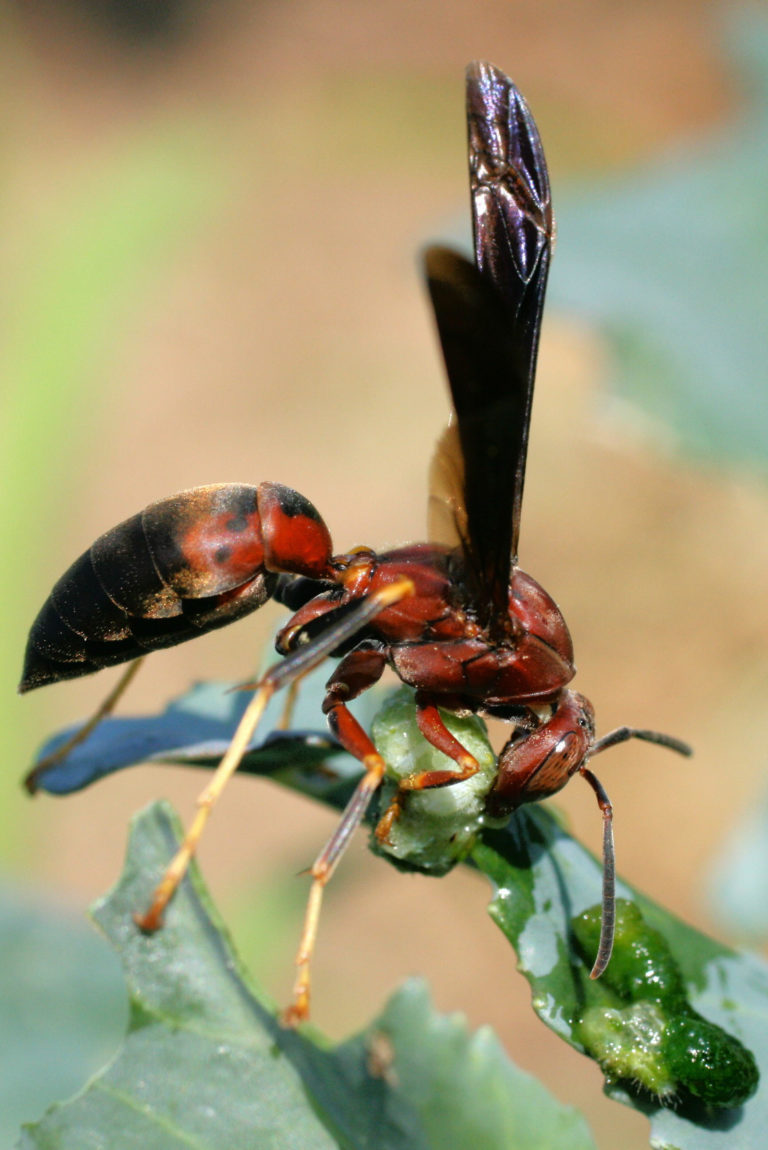
More and more farmers are becoming aware of these risks to their operations, human health and the environment, and are turning instead to ecological pest management strategies for solutions. Ecological strategies treat the farm like an agroecosystem, meaning they use good agricultural practices that mimic and reinforce the natural relationships already built into farming systems. Using cover crops instead of leaving the soil bare, for example, protects soil from erosion, shades out weeds, nurtures soil microbiology and attracts beneficial arthropods that eat pests, pollinate crops and recycle crop debris. In this way, good agricultural practices boost the natural defenses of your farm.
These good agricultural practices, however, require careful farm planning and habitat management, and they depend on two driving ecological concepts: biodiversity and biological control. Biodiversity refers to all of the living species found in and around the farm, including crop plants, weeds, livestock, woody plants and shrubs, arthropods, soil biology, wildlife and many other organisms. The interactions between these organisms and their environment provide valuable ecosystem services like biological control, or the use of natural enemies to reduce, prevent and delay pest outbreaks. Instead of reacting to pest problems with off-farm inputs, ecological strategies prevent problems from arising by proactively addressing their root causes, such as low biodiversity, stressed crops and degraded soils.
Ecological Principles for Managing Pests
In general, sustainable pest management practices adhere to one or more of the following guidelines:
1. Promote biodiversity
2. Create healthy crop habitats
3. Reduce disturbance to soil and non-crop vegetation
4. Minimize off-farm inputs
These four guidelines are summarized in this publication. For more in-depth information on ecologically based pest management and the strategies that growers are using successfully, read through publications like SARE’s Manage Insects on your Farm and Pest and Disease Control Strategies for Sustainable Pacific Agroecosystems, part of the Food-Producing Agroforestry Landscapes of the Pacific series.
1. Promote Biodiversity
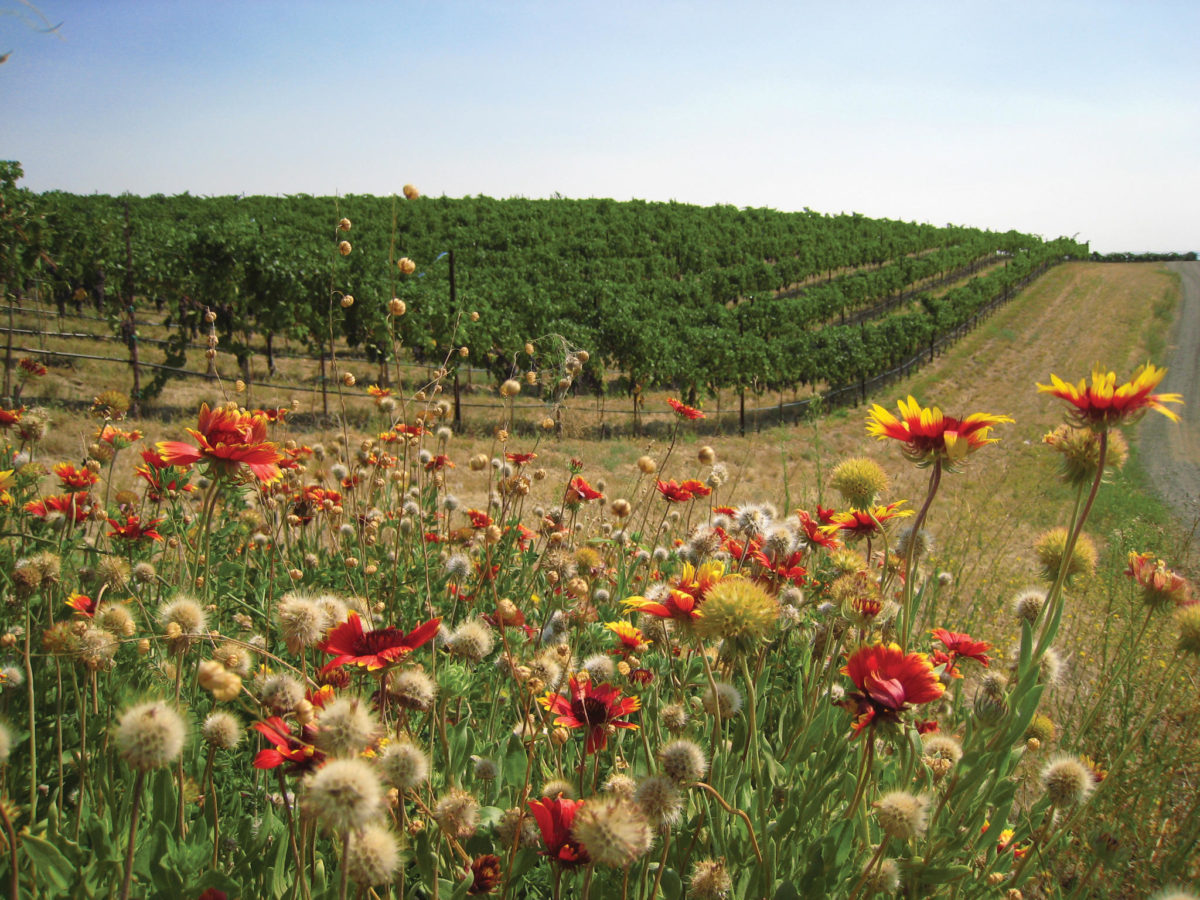
Farming is possible thanks to the many complex relationships that exist between species across the farm, in fields and in the soil. Diversity in the crops you grow and in the way you manage them goes a long way toward reducing pest pressures. A diverse patchwork of crop and non-crop species attracts beneficial insects by providing them food and shelter. Including different varieties of the same crop species can provide plants with genetic resistance against disease-causing organisms and against pest insects. Diversity aboveground drives diversity below ground. For example, rotating plant species that have different growth habits, rooting depths and root exudates promotes the health of the soil, which influences crop defenses.
2. Create Healthy Crop Habitats
The first line of defense against pests is a healthy plant, and healthy soils produce healthy plants. Plant defenses work better when they grow in well-drained, porous soils that have a high level of biological activity. A robust community of soil arthropods and microorganisms promotes soil health and nutrient cycling, and may suppress disease-causing organisms in the soil. With adequate access to plant-available nutrients, crop plants become better competitors against weeds and can naturally defend themselves against insect pests that are feeding on them.
3. Reduce Disturbance to Soil and Non-Crop Vegetation
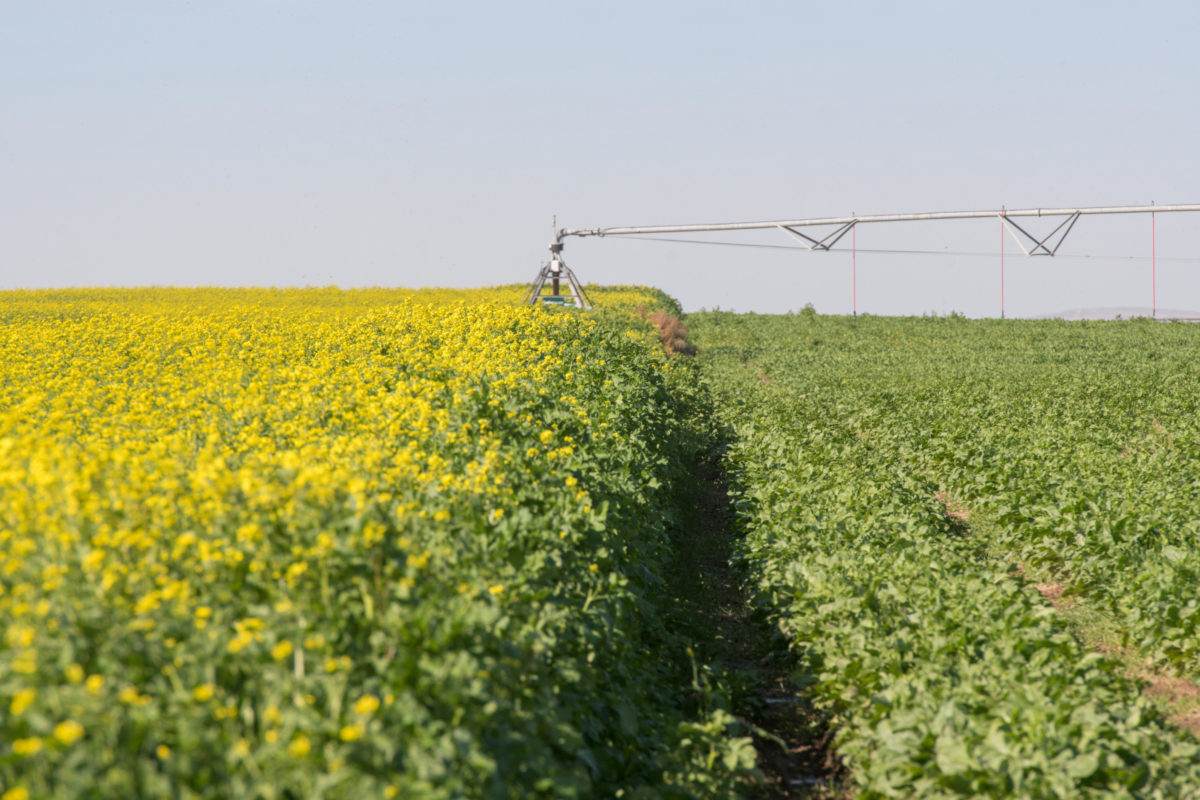
Agricultural disturbances include practices like harvest, tillage and pesticide applications. Disturbances provoke pest problems and create situations where crop plants are more stressed and vulnerable to pests. While some disturbances such as harvest are unavoidable, others can be minimized. Minimizing the disturbances caused by field tasks promotes undisturbed habitats that beneficial insects use for shelter and to forage for prey, nectar and pollen. Use tillage techniques that avoid stirring the weed seedbank, which could otherwise result in more problematic weeds coming to the soil surface. Frequent tillage also depletes soil organic matter and reduces important soil biology, both of which are vital for healthy soil and crops.
An informed nutrient management plan begins with a soil test. Use results from soil or plant tissue tests to match your fertilizer timing and rates to the needs of the growing crop. Improve nitrogen use efficiency on your farm through best practices like split rate applications, manure management and fertigation. If available, technologies like variable rate fertilization further improve your ability to target fertilizer applications to the crop’s needs.
4. MINIMIZE OFF-FARM INPUTS
Synthetic fertilizers and pesticides that are improperly managed can worsen pest problems. Pest insects tend to be more attracted to heavily fertilized crops. When excess nitrogen and phosphorus are left behind in the soil, weeds use it to grow, shed seeds and compete with nearby crops. When you reduce off-farm inputs in favor of stable organic amendments such as cover crop residues and composts, which act as slow-release fertilizers, your crop will have access to nutrients when they are needed.
Project Highlights
In the U.S. Virgin Islands (LS12-252), sunn hemp and sunflowers were used as a green manure mulch in order to suppress weeds in jalapeño pepper production. Researchers used a roller crimper to kill sunn hemp and sunflower cover crops before transplanting peppers directly into the residue. The living cover crops provided near-total weed suppression while growing, and cover crop residues provided weed suppression similar to full tillage for up to six weeks after termination.
